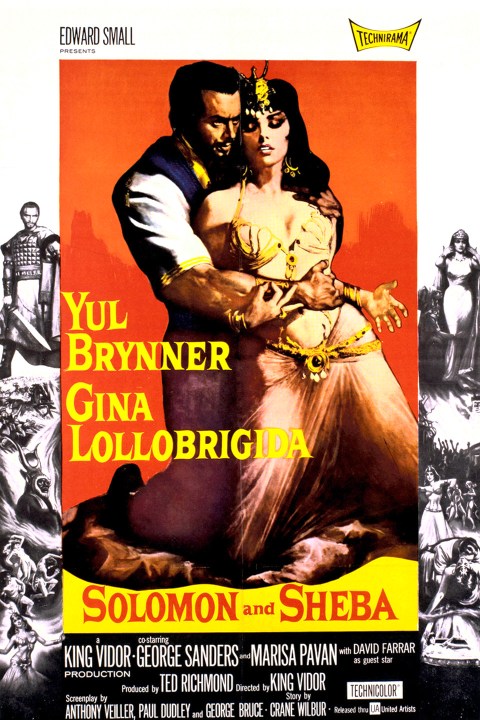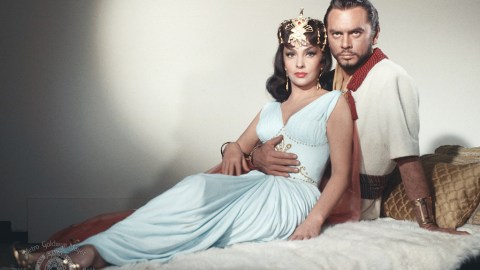17. 4. – 19. 4. 2026
Solomon and Sheba

 Original title: Solomon and Sheba
Original title: Solomon and ShebaDirector: King Vidor
Production: 1959, USA
Length: 139 min. + intermission
Screened:
KRRR! 2024: 70mm 2.2:1, Colours faded, Digital Sync, Spoken language: English, Subtitles: CzechAnnotation for KRRR! 2024
Solomon and Sheba is one of those films whose birth was long and difficult, but whose biggest job caught up with the filmmakers just when everything seemed on its way to a happy ending. In fact, the two actors who were approached and who both turned it down at first, Tyrone Power and Yul Brynner, got the lead roles. How did that happen? Tyrone Power eventually accepted the offer after they rewrote the script to his satisfaction, and indeed began filming alongside Gina Lollobrigida in the second lead role. But tragedy struck two-thirds of the way through the arduous shoot when Tyrone Power died suddenly and the co-production of several major film companies (including Power's) stalled. Various options were considered, including writing off the entire film, but in the end they decided to reshoot Power's scenes with a new actor in the lead role. Yul Brynner became that actor, although like Power, he initially declined the offer.
As much as Solomon and Sheba may seem in retrospect to be a somewhat pragmatically planned big budget film, coming after the success of Rouch (1953), The Ten Commandments (1956) and Ben Hur (1958), it actually began to be made more or less simultaneously with Rouch (the first ever Cinemascope feature film) in the 1930s. Its financing, preparation and production, however, took six long years, until it premiered at the end of 1959. Despite mixed critical reactions, it was a success, but as a result it still remains in the shadow of its more famous predecessors and successors, such as Spartacus, a year younger, which was originally in the works with Brynner. It is ironic, then, that the legendary director behind Solomon and Sheba was King Vidor, for whom this was the last project of his career and whose monumental 1925 silent version of Ben-Hur became an impressive precursor to all these films.
Perhaps also thanks to Vidor's extraordinary experience, the whole unfortunate project was managed to be steered and brought to the finale, although he himself was rather embarrassed by Brynner's performance and considered it less impressive than Power's original one. Either way, we are left with a compelling ancient spectacle about a wise king who succumbs to the love of a foreign queen, and thus pits his own people against each other... This is a truly great film, with lavish crowd and fight scenes, as well as gorgeous images and scenery. It owes these to its director as well as to its precise cinematographer, Freddie Young, who demonstrated his extraordinary flair for capturing desolate landscapes in large units years later, as he was behind the camera for Lawrence of Arabia (1962).